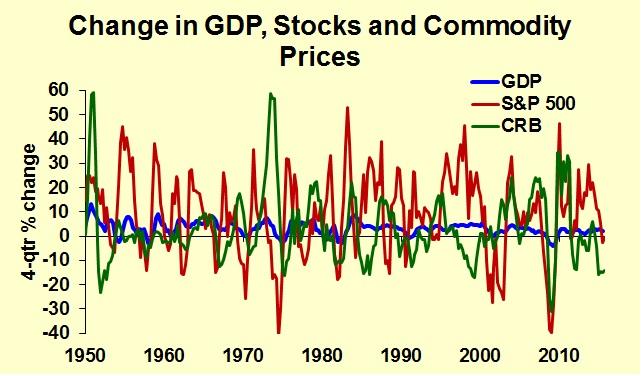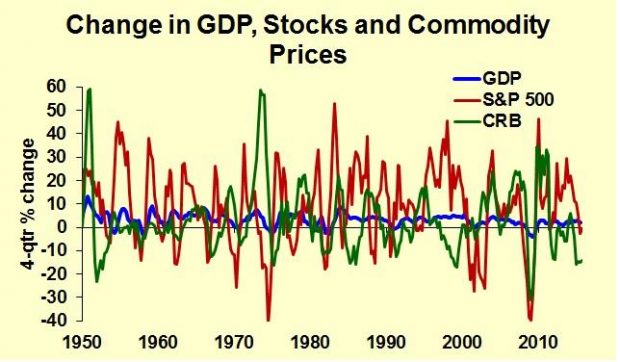Stocks markets around the world are crashing. Commodity prices are falling, with oil at $26 as this is being written. Although this market mayhem is unsettling to investors, it does not tell us that a recession is imminent.
For the most part, economics drives changes in the stock market and in commodity markets. Only rarely does causality runs in the opposite direction. Changes in the economic outlook are far more important than actual changes in the current economy. The current economy impacts one year’s demand for products and one year’s corporate earnings. The economic outlook for the coming five or ten years, on the other hand, affects multiple years’ demand for products and corporate earnings. John Maynard Keynes wrote “In abnormal times in particular … the market will be subject to waves of optimistic and pessimistic sentiment….” Prices based on market sentiment can swing wildly from day to day.
Consider the global economic forecast of a year ago, represented by the IMF’s January 2015 World Economic Outlook Update. Global economic growth was predicted to be 3.7 percent in 2016. Now the IMF is looking for just 3.4 percent this year and 3.6 percent in 2016. With multiple years of forecasts, a change in the forecast trajectory can have a large impact on expectations for future commodity demand and corporate profits. Even if the outlook is still positive, a less-positive forecast implies that stock and commodity prices should drop. The result is that commodity and stock prices bump up and down more radically than do current economic activity.

The chart shows exactly that. GDP (in blue) has pretty small fluctuations compared to the S&P 500 stock market index (red) and the CRB commodity price index (green).
The stock market sometimes falls before a recession, as it did in 1953 before the 1954 recession. Sometimes a bear market in stocks is not followed by recession. The sharp sell-off of 1962 was followed by strong economic growth in subsequent years.















No Comments